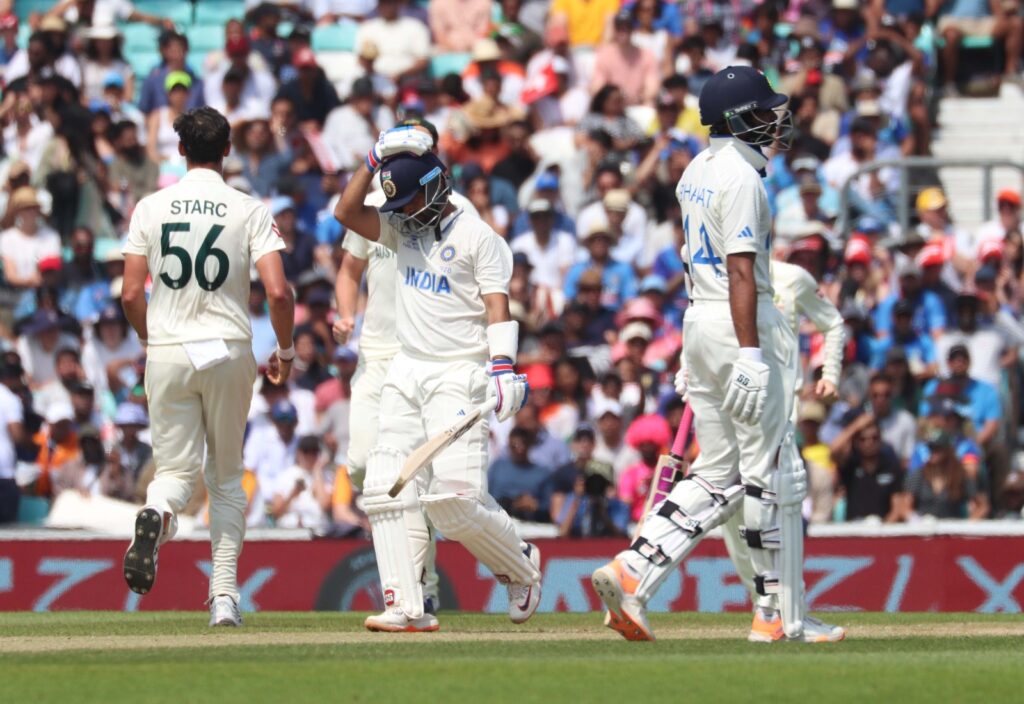
As the dust settles on India’s World Test Championship (WTC) final loss, a deep dive into what happened leaves us with far too many questions and too few answers. With the wait for an ICC trophy now stretching beyond a decade, and critics calling India the most under-performing finals team, asking some of these questions is most pertinent than ever.
- Approach: Ahead of the team’s departure for England, there was a lot of talk about approach. In fact, it was repeatedly mentioned that India should play to their strengths. However, what we witnessed was a restrained, almost fearfully conservative, approach at the start of the match. India decided to leave out Ravi Ashwin, their best spinner – with 474 Test wickets, and a mental edge over the Australians. He was fantastic down under in 2020-21 and again at home in the Border-Gavaskar Trophy. “Who do the Aussies fear?” asked Gideon Haigh. “Ashwin or a third seamer? Ask yourself, and you have your answer.” Seeing the cloudy conditions on the first morning, India decided to leave Ashwin out, blithely ignoring the five left-hand batters in the Australian line-up. Needless to say, most of the match was played in bright sunshine as well.
For a good part of the last decade, Ashwin has been India’s go-to bowler. And yet we have seen him dropped time and again, as though spinners can’t bowl in English conditions. India did this in Southampton in 2014, and witnessed Moeen Ali spin England to victory with 8-129. They did it again here in the WTC final and the result is in front of us. Not to forget, Ashwin is no mug with the bat either. Was it rigidity or conservatism that explains the decision to leave the talisman out?
- Did India get the selection right? All of the top five were right-hand batters. Rohit Sharma, Shubman Gill, Cheteshwar Pujara, Virat Kohli and Ajinkya Rahane. And in the last three years, it was Rishabh Pant who was India’s X-factor batter who saved the team many a time. Why not play Ishan Kishan, the closest like-for-like replacement for the injured Pant? His flamboyance could have turned the game in a session. Bharat, the batter, was always a dubious selection, and it hurt India.
- As I have argued before, however much we say it, it would have been impossible even for Sir Donald Bradman to make a complete transition to Test cricket after two months of IPL action. It is just not possible to do so technically. While the IPL schedule can’t be tampered with, it is important that the BCCI thinks about lobbying the ICC to try and push back the one-off WTC final to September, to allow Indian batters a level playing field. That’s assuming India even make the next couple of finals.
- For a team coached by the legendary Rahul Dravid, the conservatism is almost impossible to understand. Dravid’s work ethic and experiments as captain of India are still talked about. Yet, as coach, he hasn’t tried a single out-of-the-box experiment. Take a look at England, and we can see the number of young players they have blooded in the last two years. Harry Brook, Ollie Pope, Matthew Potts and Josh Tongue, to name a few. India haven’t really tried a single youngster, and it is imperative we do so as a new cycle is about to start. Yashasvi Jaiswal, Tilak Varma and a couple of others should be tried with immediate effect.
- Celebrating individual performances more than team wins. We in the media are also guilty of this. Nowhere else in the world are individual performances lauded as much as in India. The truth is that when you are playing team sport, individual efforts mean little unless the team wins. And the faster we come to terms with this, the better. We will celebrate a Kohli effort or a Rohit half-century, and forget the larger story. The mace is with Australia, and that’s the only thing that matters. Also, a critical word on Kohli or Rohit, and social media becomes toxic. The trolls abuse you and question your parentage. The reality is that India’s batting has failed as a collective, and has done so for three years now. Rohit, Gill, Pujara and Kohli. So many starts in this Test, in excellent batting conditions, and not one defining innings like those played by Travis Head or Steven Smith. And that’s why Australia won. Introspection is the need of the hour. By abusing those that question, we get nowhere.
- Overdoing the long rope: One of the features of the Dravid-Rohit has been the long rope given to players. The question is whether we overdone this. India played the same line-up in almost all the games, and there was an element of rigidity to the thinking. Could new blood have made a difference? That’s a question that will forever remain unanswered.
This crushing defeat in the final has left us with a plethora of questions and doubts. Answers to some of these could well define how India goes ahead in the Test format in the next 24 months. The next WTC final should be the target, and India won’t get there without confronting the tough questions.




